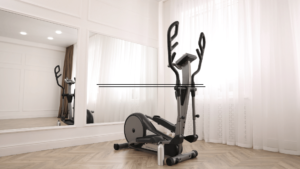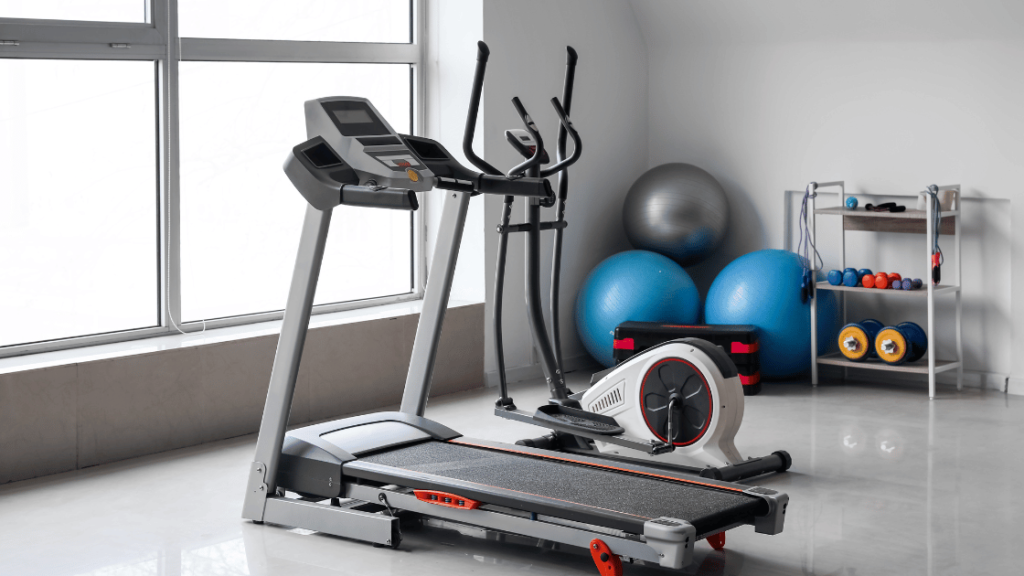Indoor cardio equipment, particularly treadmills and ellipticals, has surged in popularity as a staple for fitness enthusiasts and beginners alike. Both offer distinct advantages and disadvantages, but how do you choose which is right for you? Let’s dive deeper into the intricacies of these machines, examining their features and benefits in detail.
Treadmills: The Classic Choice

Treadmills, being the more traditional option, have been synonymous with cardio exercise for decades.
Pros of Treadmills
- Versatility in Training: Whether you’re a seasoned runner, an avid walker, or someone looking to do high-intensity interval training, treadmills cater to all. The ability to adjust speed and incline offers endless variations.
- Simulate Real-World Running: Training for a marathon or a trek? Treadmills can simulate different terrains and conditions, preparing you for real-world challenges.
- Bone Health: The impact from running or walking can stimulate bone growth, countering age-related bone density loss.
Cons of Treadmills
- Joint Strain: The repeated impact can be hard on joints, leading to potential injuries or exacerbating existing conditions.
- Safety Issues: Incorrect use, such as improper footwear or distractions, can lead to accidents.
- Size and Portability: High-end treadmills can be bulky and are generally heavier than ellipticals.
Ellipticals: The Modern Alternative

Ellipticals have emerged as a popular alternative, offering a unique motion and workout experience.
Pros of Ellipticals:
- Joint-Friendly Workouts: The gliding motion ensures your feet never leave the pedals, significantly reducing impact on joints.
- Engage More Muscle Groups: With handlebars moving in tandem with foot pedals, ellipticals engage both upper and lower body, offering a comprehensive workout.
- Variable Resistance: Ellipticals allow you to adjust resistance, mimicking the effect of climbing or moving against force.
Cons of Ellipticals:
Unconventional Movement: The elliptical motion might feel unnatural to some, especially newcomers.
Lower Caloric Burn: On a like-for-like basis, running usually burns more calories than elliptical workouts. However, this difference can be minimized by increasing the resistance and using the handlebars actively. Another factor to note is that if you enjoy doing one more than the other – it might lead to better results in the long run.
Spatial Considerations: While ellipticals are often lighter than treadmills, they still take up a fair amount of space.
The Fat Loss Debate
For many, the primary goal is fat loss. While both machines can aid in calorie burn, the ultimate determining factor is the intensity of the workout. High-intensity sessions, whether on the treadmill or elliptical, can lead to increased post-exercise calorie burn. However, treadmills might have a slight edge due to the potential for higher calorie expenditure when running, especially at steeper inclines.
Joint Considerations
Ellipticals take the crown for being more joint-friendly. The continuous foot contact ensures a low-impact workout, making it ideal for those with joint concerns or a history of injuries. Treadmills, while offering a more natural movement, come with the caveat of increased joint impact, especially at higher speeds.
Making the Decision: Points to Ponder
- Fitness Goals: Avid runners or those training for specific events might lean towards treadmills. Those seeking a full-body workout with minimal joint impact might prefer ellipticals.
- Physical Constraints: Chronic joint pain, recent surgeries, or injury histories can make the elliptical a safer choice.
- Budget and Space: Both machines come in various price ranges, but always consider the available space in your home. Some modern versions are foldable or more compact.
Maintenance Matters
Treadmills: They demand regular upkeep. Ensure the belt remains debris-free and lubricated. Motors should be dusted, and parts routinely checked for wear.
Ellipticals: Typically require less maintenance. Periodic checks for bolt tightness, track cleanliness, and general wear and tear are sufficient.
Space Requirements – Ellipticals Vs Treadmills
Both treadmills and ellipticals are substantial pieces of exercise equipment that require a fair amount of space, but they have different spatial footprints and considerations. Here’s a breakdown:
Treadmills
- Footprint: Most home treadmills are approximately 6 to 7 feet long and 2.5 to 3 feet wide. This footprint can vary based on the model and brand.
- Additional Space: For safety, it’s recommended to leave a clearance of at least 2 feet on either side of the treadmill and at least 5 feet of space behind it. This ensures safe entry, exit, and minimizes injury risk in case of slips or falls.
- Height Clearance: The treadmill deck (where one walks or runs) can elevate during incline workouts. Consequently, it’s essential to consider ceiling height. Ideally, there should be at least a 6 to 8-inch clearance above the user’s head when the treadmill is at maximum incline.
- Storage: Some modern treadmills are foldable, allowing the deck to be lifted and locked, which reduces the length of the machine and saves space when not in use. While this is a space-saver, the machine still remains large and is best suited in a dedicated space or corner.
- Compact Treadmills. There are some smaller treadmills that are extremely compact and can fit under a bed
Ellipticals
- Footprint: Ellipticals typically measure between 5 to 8 feet in length and 2 to 3 feet in width. However, the footprint can be more square-like or elongated, depending on the model and flywheel’s placement.
- Additional Space: Like treadmills, it’s wise to leave a buffer zone around the machine. A clearance of about 20 inches on each side and behind the elliptical is advisable for safety and maintenance access.
- Height Clearance: Ellipticals have a pedal ascent, meaning the pedals rise as you use the machine. The height clearance should account for the tallest user’s height plus the maximum pedal ascent—usually an additional 20 to 25 inches—to ensure they don’t hit the ceiling.
- Stride Length: Some ellipticals have longer stride lengths, which can increase the machine’s overall length. Additionally, rear-drive ellipticals (where the flywheel is placed behind the user) tend to be longer, while front-drive or center-drive ellipticals might be more compact.
- Storage: Unlike treadmills, most ellipticals are not foldable. However, some newer models come with transport wheels, making them easier to move. There are even some pretty nifty under desk ellipticals.
Why You’d Choose a Treadmill
- Training for an Event: If you’re preparing for a marathon, race, or any event that involves running, a treadmill provides the closest simulation to outdoor running, allowing you to train regardless of weather conditions.
- Caloric Burn: Generally, running on a treadmill at moderate to high speeds burns more calories than an elliptical workout, making it effective for weight loss goals.
- Familiarity and Comfort: The motion of walking or running is innate and familiar. For many, treadmills are an intuitive choice because they mimic these natural movements.
- Versatility: Treadmills offer a vast range of workout possibilities, from slow walks and brisk jogs to sprints and hill workouts. The ability to change both speed and incline offers dynamic training sessions.
- Improved Bone Density: The weight-bearing aspect of running can be beneficial for bone health, potentially reducing the risk of osteoporosis.
Why You’d Choose an Elliptical
- Joint-Friendly Workout: The biggest advantage of ellipticals is their low impact nature. If you have a history of joint pain, injuries, or are recovering from surgery, ellipticals provide a cardio option that’s easier on the joints.
- Total Body Engagement: The moving handlebars on many ellipticals mean you’re not just working your legs. You’re also engaging your arms, chest, back, and core, providing a holistic workout.
- Cross-Training Potential: By adjusting resistance and occasionally using the elliptical in reverse, you can target different muscle groups and add variety to your workouts.
- Reduced Injury Risk: Given the controlled movement of ellipticals, there’s a lesser risk of strain or injury compared to the potential missteps on a treadmill.
- Consistent Resistance: Unlike treadmills where you might find “easy” moments as you decrease speed, ellipticals provide constant resistance, ensuring you’re always working against a force, potentially leading to improved muscle tone and endurance.
Both the treadmill and the elliptical have unique features tailored to different needs. Your choice will hinge on your individual goals, physical condition, and personal preferences.
Conclusion
Choosing between a treadmill and an elliptical is not a one-size-fits-all scenario. Both are excellent cardio machines with their respective merits. Assess your goals, physical condition, space, and budget to make an informed decision. Remember, the best machine is the one you’ll use consistently. So, find your fit and embark on your fitness journey!

